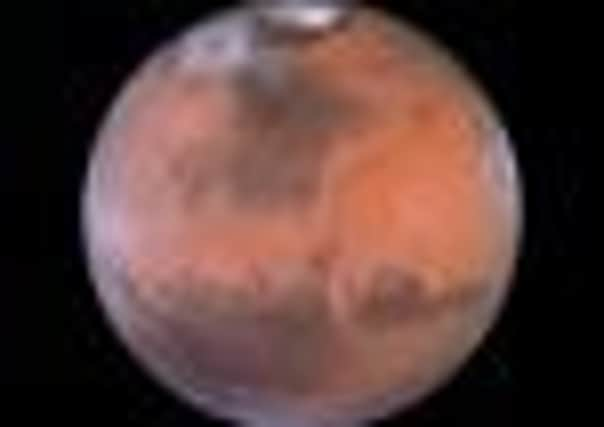Scots laboratory to examine Mars meteorite


The piece of a Martian meteorite has been obtained by scientists at the Scottish Universities Environmental Research Centre (SUERC).
They are hoping to have a clearer idea of when it left Mars and how long it spent in space after examining the 0.2 gram fragment of the Tissint meteorite.
Advertisement
Hide AdAdvertisement
Hide AdThe scientists plan to use state-of-the-art “mass spectrometer” equipment to measure how much of the elements helium, neon and argon are in the fragment.
Those measurements will help the team understand how long the meteorite was exposed to cosmic radiation in space and how long ago it left Mars.
The meteorite, named after the area of Morocco where it landed, is one of just 61 Martian meteorites to have been found on Earth.
They were blasted from the face of Mars many thousands of years ago by impacts of several massive asteroids and travelled through space before arriving on earth.
Dr Fin Stuart, who will lead the analysis at a SUERC facility in East Kilbride, South Lanarkshire, said: “As meteorites travel through space, they are bombarded with high-energy cosmic radiation which our atmosphere shields us from here on Earth.
“The radiation explodes some atoms in the meteorite, creating ‘daughter’ atoms.
“The new atoms are known as cosmogenic isotopes. They are very rare on Earth and are one of the telltale fingerprints which show an object has spent time in space.
“We will use a high-precision mass spectrometer to measure the cosmogenic isotopes of the gases helium, neon and argon in Tissint.
Advertisement
Hide AdAdvertisement
Hide Ad“From these measurements we can determine how long the meteorite was exposed to cosmic radiation in space, and thus how long ago it left Mars.
“It requires measuring a few million atoms but we’re hopeful that we’ll be able to get a much clearer idea than we currently have of how long Tissint, and the shergottite meterorite group as a whole, spent in space before reaching Earth.”